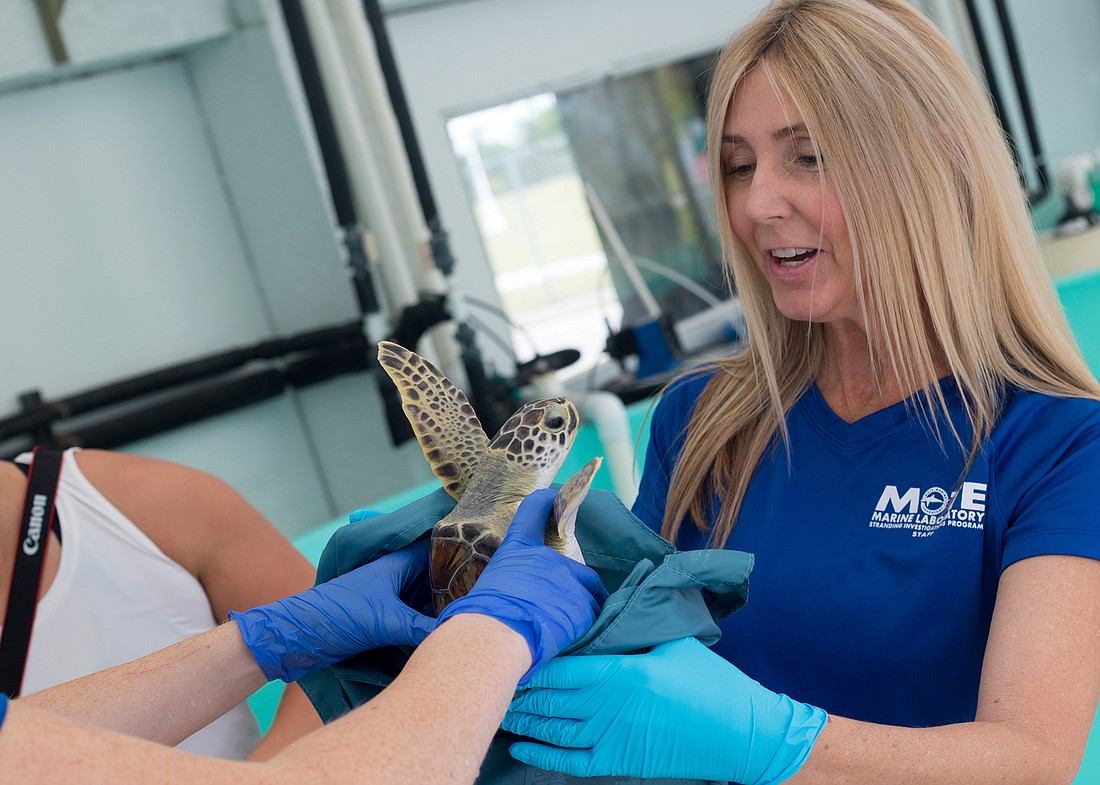- May 3, 2025
-
-
Loading

Loading

Mote Marine Laboratory & Aquarium’s founding director was Eugenie Clark, fondly remembered as the “Shark Lady.” In honor of her would-be 100th birthday and her legacy and research, Mote is putting the spotlight on some of Clark’s intelligent, dedicated and women who have followed her path in an upcoming three-part lecture series called “Meet the Women of Mote.”
Lynne Byrd is the rehabilitation and medical care coordinator. She’s one of three women, dubbed the “Ocean Crusaders,” who will be speaking on Sept. 14. The Longboat Observer spoke with Byrd to find out more about her background and rescue work.
I have worked at Mote for just over 21 years. I started at Mote in June of 2001.
I grew up in a small beach town called Point Lookout in New York until middle school, then Ormond Beach, Florida through high school. I was always surrounded by the ocean.
I began my journey in the Florida Keys, volunteering at night during a mass stranding of pilot whales.
Mote drew my attention back in the early 1990s, when they rehabbed and released a dolphin named Freeway. I really admired how the aquarium was built to showcase all the great work the researchers were doing.
Wild animals are resilient at hiding sickness and injuries. They think in a matter of survival of the fittest. However, you can look at overall respiration, heart rate and changes in behavior.
A dolphin named Ginger was one of my most memorable and most challenging dolphin rehabilitations. By the time Ginger was released in 2009, Mote volunteers and staff had spent 1,320 hours monitoring her condition along with rehabilitating this dolphin on an all-live fish diet because she refused to eat dead fish that we normally maintain our patients on. Ginger had eaten nearly 4,000 live pinfish. That’s 35 pinfish fed five times a day at about $1 per fish by the end of her release. Researchers continue to see Ginger to this day during monthly population monitoring surveys and know that she has had three calves as of December 2020.
We rescue, rehabilitate and release various sea turtles of all life stages from hatchlings through adults. Connor is an example of a loggerhead turtle we rescued and released off Longboat Key. Mote is unique because our Sea Turtle Rehabilitation Hospital can provide specialized care relating to turtle fibropapillomatosis, which is common in a lot of the turtles we treat.
Currently, most of the animals Mote treats are sea turtles. At this point, Mote has rehabilitated over 800 turtles, not including the yearly 2,000 hatchlings we treat.
74.
My background, how I got into the field and some of my career highlights thus far.